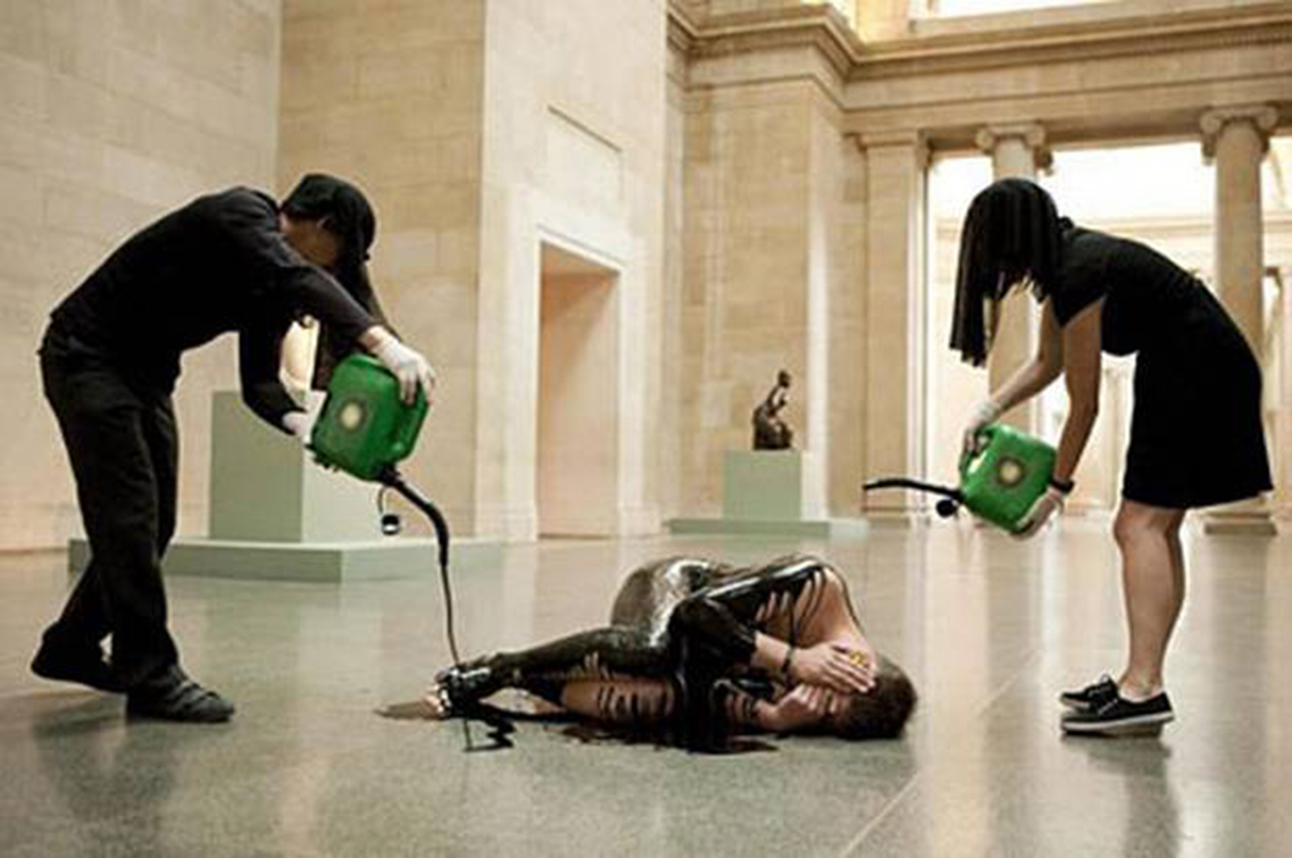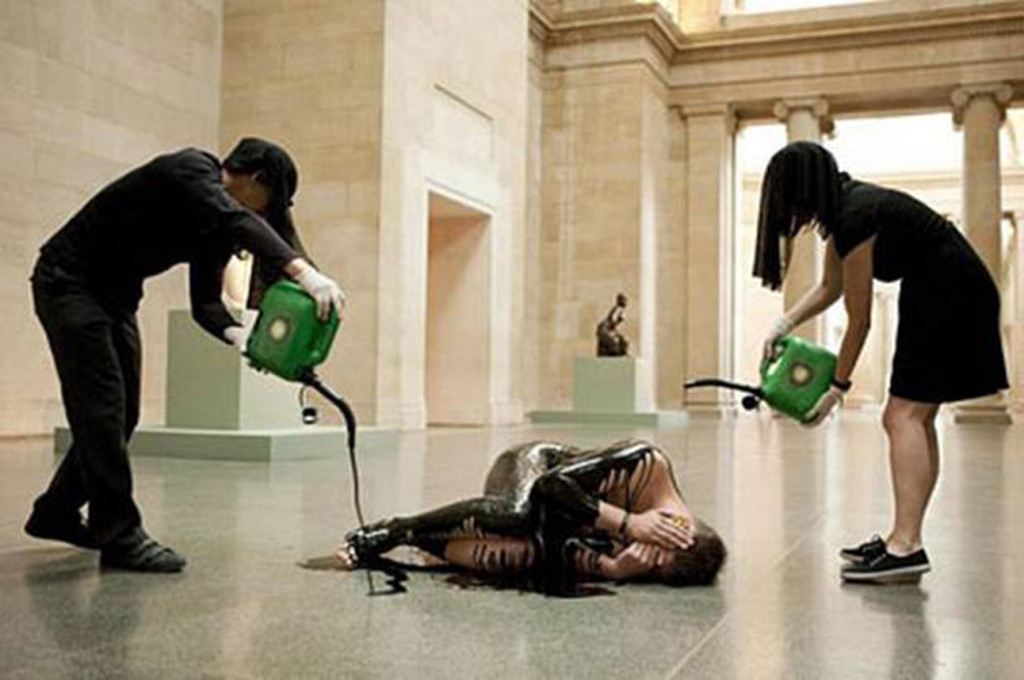Originally published in (H)Art, October 2011.
There’s a certain irony about Tate’s recent announcement that, as part of the planned development of Tate Modern, the institution’s newest exhibition space will be housed in the former power station’s underground oil tanks. By all accounts the £215 million expansion, scheduled to open in 2016 and increase exhibition space by as much as 70%, is set to be a stunning addition to the world-famous gallery. But it also draws attention rather starkly to one of the biggest problems facing Tate, and indeed many other arts institutions across London: namely, money.
On the surface the conversion of a former fossil-fuel burning power station into a world-class venue for contemporary art may seem like a measure of how far society has come since 1947, when Southbank Power Station was commissioned. And what could be a more fitting sign of environmentally-minded progress than to exhibit art in a space previously designed for the storage of oil? And yet Tate continues to receive vast sums of money from the oil industry – and in particular BP, the company that hit the headlines in 2010 for the widespread devastation caused by the Deepwater Horizon oil spill.
At the same time as this announcement, Tate also announced that over the course of 2010 it was the 2nd most popular arts institution in the world, after the Louvre in Paris, having recorded visitor figures of 7.4 million across its four galleries – Tate Britain, Tate Modern, St Ives and Liverpool. Unsurprisingly, the eyes of the art world are placing Tate under ever-increasing scrutiny.
Artists, and by extension arts institutions, have long had an uneasy relationship with money, but what is interesting is the way that, right now in London, both individual artists and art collectives are producing work that responds directly to some of the issues raised by the relationship between arts institutions and big business. Specifically, the relationship between Tate and BP has come under sustained fire.
Perhaps unsurprisingly, given its now severely tarnished reputation, BP has borne the brunt of the attention. In June 2010, as the oil from Deepwater Horizon began to wash up on the east coast of America, Tate Britain held a summer party to celebrate two decades of BP sponsorship. The event was picketed by members of Good Crude Britannia.
That same month, Greenwash Guerrillas were at the National Portrait Gallery to protest against BP’s prominent involvement in the annual BP Portrait Prize. And the month before that a group of artist going by the name of Liberate Tate released black balloons attached with dead fish into the Turbine Hall at Tate Modern. As Greenpeace campaign director Robin Oakley, commented at the time: “Organisations like the National Portrait Gallery help shape public attitudes towards the big issues of the day and if the Gallery is serious about climate change then the sponsorship deal with BP has got to end.”
At the same time, Greenpeace held a competition to redesign the BP logo. Blackened wildlife, skulls, and graphic images of environmental destruction were all used to skewer BP’s ‘green’ ad campaigns. The brand’s slogan, ‘Beyond Petroleum’, was altered to things like Beyond Promises, Beyond Pollution, and perhaps most damningly of all, Blackened Planet.
Clearly the highly visual nature of this campaign from Greenpeace was a key part of its success. It is through such visual means that a corporation’s attempt to promote a benign public image can be fatally undermined. And artists, of course, are the perfect people to exploit the power of the image. One of the most striking series of photographs was taken by Amy Scaife and depicts an intervention carried out by Liberate Tate inside Tate Britain on the anniversary of the Deepwater Horizon explosion. A naked man lies on the ground inside the museum, his hands covering his eyes. Two black-clad assistants slowly approach, and from BP-branded containers begin to pour litres of thick black oil all over him. The black liquid oozes down his body and begins to spread across the gallery floor. This is the damage that is being done.
Such high impact art-actions have clearly been extremely effective in drawing wider attention to the issue. In April 2011, shortly after direct action groups London Rising Tide and Art Not Oil co-ordinated an anti-BP flashmob sleep-over in Tate Modern’s Turbine Hall, leading figures from across the UK arts scenes signed an open letter to the Guardian. In it they urged Tate to “demonstrate its commitment to a sustainable future” by severing its ties with the controversial oil giant. The letter accused BP of continuing to “jeapordise ecosystems, communities and the climate by the reckless pursuit of ‘frontier’ oil” and was signed by a host of curators, film-makers, artists, activists and academics, including No Logo author Naomi Klein, Stuckist co-founder Charles Thomson, and artists Billy Childish, Mark McGowan and John Keane. “As people working in the arts,” the letter argued memorably, “we believe that corporate sponsorship does not exist in an ethical vacuum.”
It’s important to note however that this is not simply yet another ill-defined anti-capitalist movement. Many of the most high-profile arts venues in London already receive large sums of money from corporate sponsors: accountants Deloitte sponsor the annual arts festival Ignite at the Royal Opera House, for example, whilst the recent Ron Arad show at the Roundhouse was accompanied by heavy branding from financial news giant Bloomberg, who’ve sponsored the venue for years. Neither of these were accompanied by any form of protest, and that’s because it’s not the corporate dollar per se that gives rise to so much strong feeling; it’s the hypocrisy.
The most prominent example of this hypocrisy is, again, Tate. Embrace the Place, which took place outside Tate Britain on 3rd September 2011 was exactly the kind of environmentally progressive “special initiative” that Tate prides itself on. Their 2015 vision states openly the desire to promote sustainability, by, among other things, “demonstrating leadership in response to climate change”. And certainly Embrace the Place did that, through all manner of community and environmentally-minded activities and events. Attracting over 1,000 visitors, highlights included constructing fantasy model trees out of recycled materials with Subject to Change, making and decorating our own seed packets with Somewhere and Friends of Abbey Gardens, and digging up potatoes to make delicious (and educational!) chips with 815 Agency. All the while the music that played in the background was powered by bicycle. And yet the whole event was put on by an organisation that takes money from BP, something I couldn’t help but remember, even as I munched on delicious chips that I’d dug and washed and peeled and chipped all by myself.
As Kevin Smith of art campaign group PLATFORM acknowledges, “They [Tate] do brilliant education work and regularly exhibit artworks that celebrate human rights and creative freedom,” but all that is threatened by the association with BP. “No amount of work to cut carbon emissions in the museum sector can mitigate the effects and devastation that BP is having on both the environment and peoples lives right now. If Tate want the public to take their efforts to make cultural change around the issue of climate change seriously, they need to think ethically about where their money is coming from.”
But it’s not just BP. The launch of Tate’s new partnership with Vodafone, entitled Tate Debates, was sabotaged by UK Uncut. Vodafone have been the subject of UK-wide protests recently for allegedly not paying a £6 billion tax bill, and being let off by Dave Hartnett, the big boss man at Her Majesty’s Revenue and Customs, despite, according to Private Eye, advice to the contrary from HMRC’s own lawyers. The central argument that UK Uncut made was that if Vodafone simply paid their tax bill in full, Tate wouldn’t need to resort to these kinds of corporate sponsorship deals in the first place.
And it’s not just a question of corporate hypocrisy: recent months have seen evidence of the threat of something much more widely worrying – censorship. As Kevin Smith from PLATFORM explains: “The first happened at Tate Modern when organisers and attendees at the art activist workshop ‘Disobedience Makes History’ were told not to make any interventions against BP, Tate’s sponsors. The workshop group decided to collectively disobey this missive and Liberate Tate was born. More recently the organisation I work for, PLATFORM, experienced another form of censorship when we were told not to display leaflets that were critical of Shell on a stall at an event we were speaking at at the Shell sponsored South Bank Centre.”
These are intensely worrying developments, but what is interesting is the way that such apparent examples of attempted censorship have had, as is so often the case, exactly the reverse effect of that which was intended. It is Liberate Tate who have been responsible for some of the most instantly memorable images of this highly politicised eco-art movement, and they only formed as a direct result of an act of perceived censorship. It is thus that opposition flowers.
And through such literate, focused opposition, results can be achieved. One need only recall what happened in 2009 when oil trader Trafigura was the accused of poisoning 30,000 people in the Ivory Coast. At the time Trafigura was also sponsoring Cynthia Corbett’s art prize (now called Young Masters) but after the arrangement was pointed out by artist Ivan Pope, one of the judges, photographer Tom Hunter, publicly disassociated himself from the prize. Days later, following a torrent of bad publicity (and subsequent Carter-Ruck injunctions) Trafigura were dropped as sponsors.
As the Government cuts begin to bite, more and more arts institutions are looking, rightly or wrongly, to the private sector for additional sources of revenue. Thanks to the tireless efforts of London’s artists, hopefully they’ll be forced to think twice about who they take their money from.

